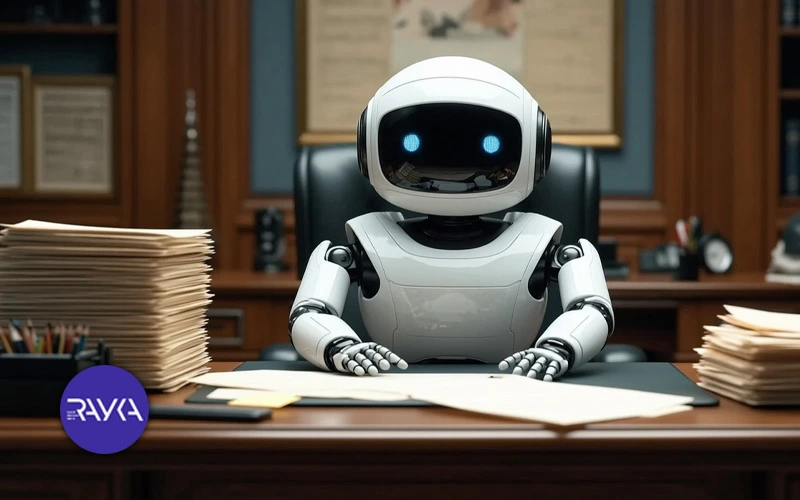
Scriptwriting in the creation of advertising teasers is one of the fundamental pillars in creating engaging and effective content that can have a significant impact on attracting the attention of the audience. A creative and purposeful scenario conveys the brand’s message clearly and memorably to the viewer and plays an important role in the success of advertising campaigns. In this article, we will examine the concept of an advertising scenario, the principles of writing it, and the characteristics of a successful scenario.
In advertising, a scenario refers to a collection of ideas and dialogues that are formulated in a narrative or conceptual way to convey the brand’s message to the audience in an attractive and impactful manner. A strong advertising scenario not only grabs the audience’s attention but also engages their emotions and encourages them to take a specific action, such as purchasing a product or using a service.
A successful advertising scenario can have a significant impact on business growth. By conveying the brand’s message in an engaging way, this scenario can engage the audience’s emotions and create more interaction. In the table below, we will examine the key roles of the scenario in advertising and marketing:
| Role of the Scenario | Explanation | Impact on Advertising |
|---|---|---|
| Strengthening Brand Identity | A strong scenario helps to recognize and establish the brand in the mind of the audience. | Increased brand awareness and creating differentiation in the market. |
| Simplifying Complex Messages | The scenario can present complex concepts in a narrative and understandable way. | Better understanding of the advertising message by the audience. |
| Creating Emotional Connection | Impactful scenarios engage the emotions of the audience and bring them closer to the brand. | Increased engagement and improved conversion rates. |
Writing an effective advertising scenario requires adhering to principles and techniques that can attract the attention of the audience and effectively convey the brand’s message. In the following, we will examine the key steps and tips for writing a professional advertising scenario.
Before starting to write the scenario, the advertising goal must be specified. Is the advertisement seeking to increase brand awareness? Is the goal to persuade the audience to purchase a particular product? Knowing these things helps the scenario to be designed correctly and avoids unnecessary messages.
To create an impactful scenario, it is essential to have an accurate understanding of the target audience. This understanding includes examining factors such as their age, gender, and social status. Also, understanding the needs, concerns, and interests of the audience helps to design advertising content in a way that is consistent with their feelings and experiences.
In addition, choosing the appropriate language and style of expression that is compatible with the audience’s communication style increases the effectiveness of the scenario. Overall, the more the scenario matches the characteristics of the target audience, the greater its chance of success in attracting attention and influencing their decision-making.

An advertising scenario should have an engaging narrative structure. These techniques in creating advertising teasers with artificial intelligence can help you create a compelling and impactful story. Therefore, we recommend using the following techniques:
A successful advertising scenario should ultimately encourage the audience to take the desired action (such as purchasing, registering, or following the brand’s page). Using a clear and specific Call to Action (CTA) at the end of the scenario is essential. In this regard, answering the question of how to create professional advertising content can help produce a targeted and effective scenario.
In the process of producing an impactful teaser, selecting the right music is one of the key elements that strongly affects the feeling and understanding of the brand message. Music can create an atmosphere that is consistent with the scenario and enhances the image movements.
Among the important points in choosing a song for an advertising teaser is that the rhythm of the music must be fully consistent with the speed of editing and the tone of the story. Fast and energetic songs are suitable for introducing exciting products, while calm songs are more effective for conveying emotional or luxurious messages. Synchronizing the beat of the music with the image cuts makes the teaser look more professional and creates a stronger emotional connection with the audience.
By following these principles, your advertising scenario can have a high impact and encourage audiences to engage with the brand.
In order for an advertising scenario to be able to attract the attention of the audience and properly convey the brand’s message, it must have specific characteristics. In the table below, we will examine the most important characteristics of a successful advertising scenario along with explanations and its impact on advertising:
| Feature | Explanation | Impact on Advertising |
|---|---|---|
| Attractiveness and Engagement | The scenario should grab the audience’s attention from the very beginning, for example, with an unexpected start or creative dialogues. | Increases engagement and prevents the advertisement from being skipped. |
| Alignment with Brand Identity | The scenario must be consistent with the brand’s values and tone. | Strengthens the brand’s position in the audience’s mind. |
| Simplicity and Understandability | The advertising message should be simple and clear so that the audience can quickly understand it. | Increases comprehension and impact of the advertisement. |
| Emotional Engagement and Interaction | A good scenario engages the audience’s emotions, such as feelings of joy, excitement, or empathy. | Increases the advertisement’s retention in the audience’s mind. |
One of the important aspects of creating a realistic advertising teaser, which significantly affects the believability and impact of the video, is the correct selection of actors and locations. Actors should be able to convey emotions naturally, and the filming environment should align with the advertisement’s message and the brand’s style.
One of the most effective scenario writing methods is the use of story narration. In this approach, the advertisement is designed in the form of an engaging story rather than directly presenting information. This method increases emotional involvement and enhances the retention of the message in the audience’s mind.
In this method, a problem or challenge that the audience faces is initially depicted. Then, the advertised product or service is presented as a suitable solution to that problem. This technique is very common in television and digital advertising.
In this method, the advertised product is compared with a similar product from competitors to highlight its advantages. However, this type of advertising must be done professionally to avoid damaging the brand’s credibility.
Using humor is one of the popular methods for attracting an audience. Advertisements that incorporate humor tend to be shared more frequently and generate higher engagement. However, this approach must be appropriate for the brand type and target audience.

To write a professional advertising scenario, it is necessary to follow a step-by-step process to achieve an impactful result that aligns with the brand’s goals. In fact, the stages of creating an advertising teaser are dependent on these principles because a strong scenario forms the foundation for producing a successful teaser. Below, we explore the main stages of scenario writing.
Defining the Advertising Goal
The first step is to determine what the primary goal of the advertisement is. Is it to increase brand awareness? Introduce a new product? Or encourage purchases? This goal will outline the overall direction of the scenario.
Understanding the Target Audience
For greater impact, it is essential to understand the characteristics of the audience (age, needs, interests, and lifestyle). The more the scenario aligns with the audience’s characteristics, the higher the chances of its success.
Understanding the Target Audience
For greater impact, it is essential to understand the characteristics of the audience (age, needs, interests, and lifestyle). The more the scenario aligns with the audience’s characteristics, the higher the chances of its success.
Choosing the Appropriate Style and Tone
Depending on the type of brand and the advertising medium, the scenario can be formal, friendly, humorous, or emotional. The tone and style should be chosen to match the brand identity and audience expectations.
Designing the Story or Main Idea
The scenario should have a cohesive and engaging narrative. Techniques such as storytelling or presenting a problem and providing a solution can be employed.
Writing Dialogues and Visual Descriptions
At this stage, the dialogues of the actors or narrator, camera movements, and visual effects are specified. These details ensure that the scenario can be executed more accurately during production.
Adding Call to Action (CTA)
At the end of the scenario, the audience should be prompted to take a specific action, such as purchasing a product, signing up, or following the brand on social media.
To ensure that the advertising scenario has the necessary impact, it should be evaluated from various perspectives. The table below explains the most important criteria for assessing the suitability of an advertising scenario:
| Criterion | Explanation |
|---|---|
| Alignment with Advertising Goal | Check if the scenario effectively conveys the main message of the advertisement. |
| Attractiveness and Engagement | The scenario should capture the audience’s attention from the start and keep them engaged until the end. |
| Simplicity and Understandability | The advertising message should be clearly stated so the audience can easily understand it. |
| Testing on a Sample Group | Conduct a test run of the scenario on a group of target audiences to receive feedback and optimize it. |
| Comparison with Successful Examples | Review similar scenarios and draw inspiration from successful advertising examples to improve its quality. |
Advertising scenarios can have various styles and structures, each having a different impact on the audience depending on the type of business, advertising medium, and advertising goal. For example, in creating a realistic advertising teaser, the goal focuses on realistically and naturally showcasing the brand’s message. These types of scenarios usually use stories that align with the realities of daily life, conveying a more tangible feeling to the audience.
In this style, real characters and objective situations are used to establish better communication with the audience. Below, we examine several examples of the most common styles of advertising scenarios.

Instagram is one of the most popular social platforms for advertising, and an advertising scenario on Instagram must be short, engaging, and suitable for the platform’s characteristics. To succeed with Instagram advertising teasers, it’s necessary to use techniques that quickly engage the audience and effectively convey the brand message. Below, we’ll examine key points for writing an effective scenario for Instagram advertising teasers.
A Strong Start in the First Few Seconds
Instagram users scroll quickly, so the teaser must grab the audience’s attention within the first 3 seconds. Using an attractive image, catchy text, or exciting music can be effective.
Simple and Clear Message
Instagram teasers are typically short (15-30 seconds). Therefore, the advertising message must be conveyed quickly and directly
Using Text and Subtitles
Many Instagram users watch videos without sound, so adding text or subtitles to the video helps convey the message better.
Clear Call to Action (CTA)
The advertising teaser should clearly state its purpose. The audience might click a link, follow a page, or purchase a product.
Text-based advertising content should be designed to capture the audience’s attention and encourage them to take a specific action, such as making a purchase, signing up, or clicking on a link. Start by choosing a compelling title that encourages the reader to continue reading the text. Then, raise the audience’s problem and present your product or service as the solution.
Instead of explaining features, focus on the benefits of the product. Also, use a conversational and friendly tone to establish better communication. Finally, include a clear call to action (CTA) so that the audience knows what to do next.